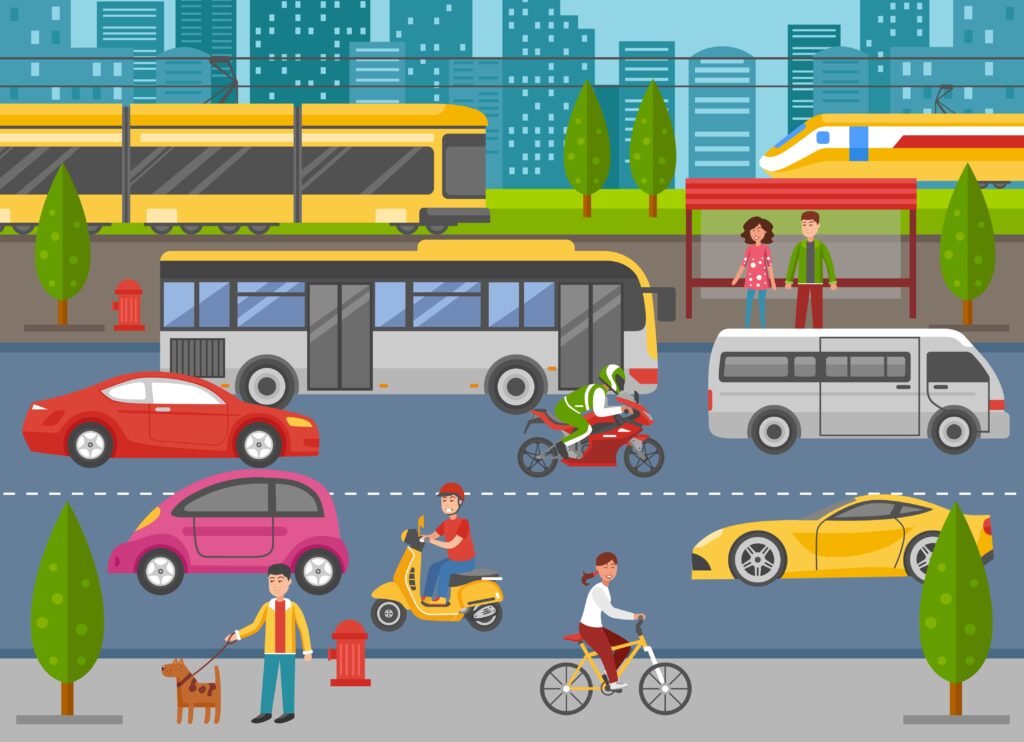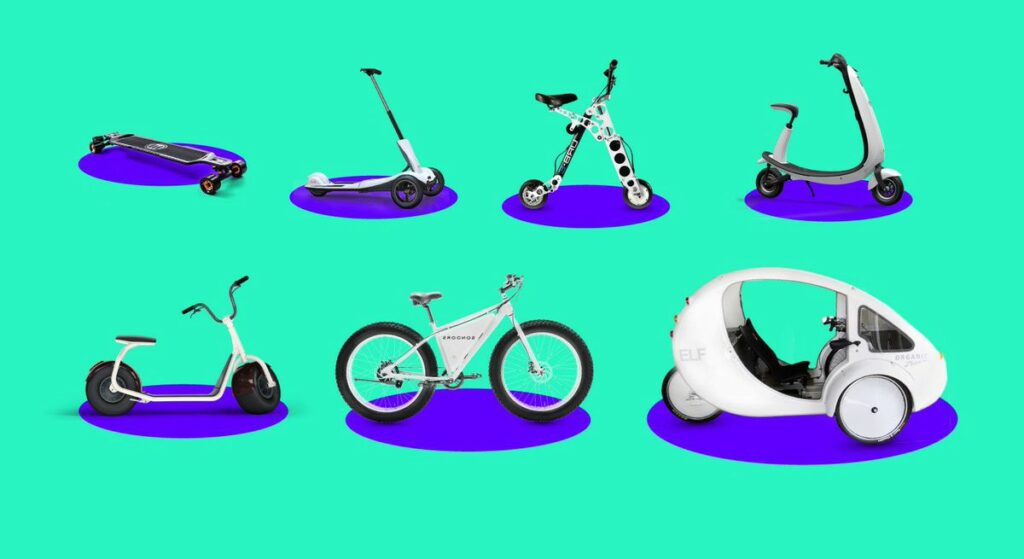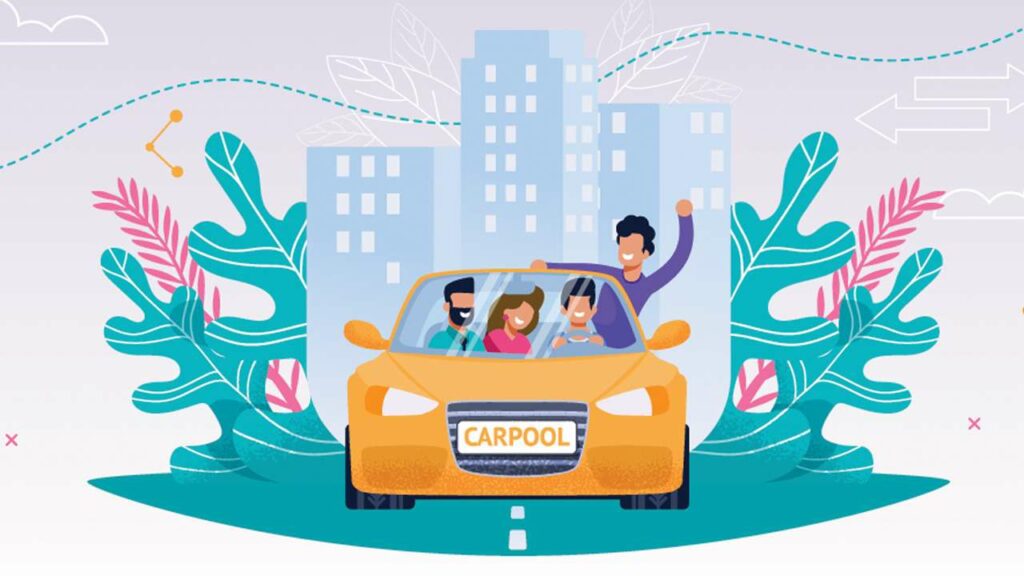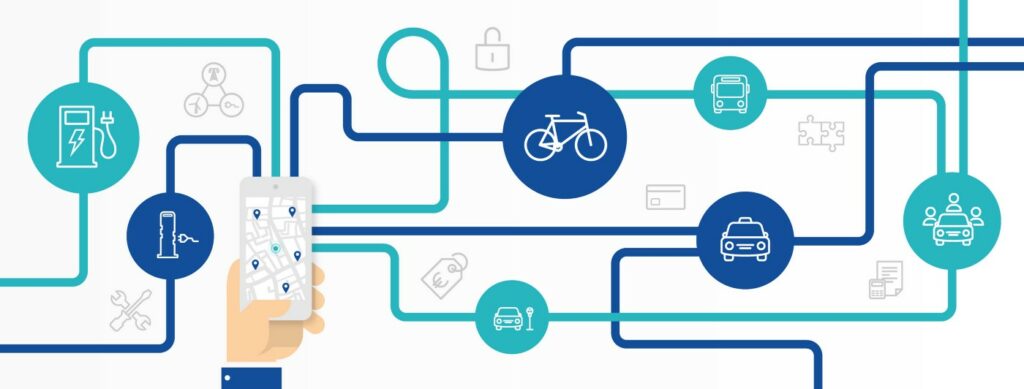Shared Mobility Modes
Shared mobility describes the shared usage of transportation when it is needed. They can either be shared after another or simultaneously and include the sharing of buses, vehicles, motorcycles, bicycles, scooters and more. Especially with the rise of autonomous vehicles, shared mobility will play an important role in urban areas. Shared mobility is currently divided into the following groups. Some of them may not be available or work differently during the ongoing COVID-19 pandemic.

Public Transit
Public transit is one of the most popular and well-known modes of shared mobility. It includes publicly or privately owned fleets of buses, trains, subways, ferries, airplanes and more. They usually operate on fixed routes and predefined schedules. Because public transit is primarily available in large cities, there are already a lot of different services available for suburbs and rural areas.

Micro Mobility
Micro mobility is mainly used for short trips and as a fast first and last mile option in cities and densely populated areas. It includes all small and low-speed vehicles but the most popular options at the moment are e-bikes and e-scooters.
Bike sharing is available with electric motors and without in different cities worldwide and allows users to rent bikes for a few minutes up to one hour or longer, depending on the rental company. There are two different versions of bikesharing – docked and dockless. While docked bikes are normally available on a dense network of static locations throughout the whole city, dockless bike sharing is relying on smart, GPS-enabled bikes with integrated locks that can be unlocked with an app on the smartphone.
Scootersharing is working like the dockless bike sharing and is currently becoming more and more popular. Most of the service providers are using electric kick scooters with a tempo limit which can be driven without a drivers license.

Automobile-based Modes
Car sharing is a service that provides a fleet of cars for a limited time. Because it is usually available for a few hours, it is ideal for mid range trips, shopping or smaller cargo. This service is usually limited for members who have to pay a monthly fee and undergo a screening by the provider before renting their first car. The hourly rates for the cars usually include fuel, insurance, parking and tolls and depend on the demand and day. The cars can be pre-booked with an app and accessed with the phone or a special access card. Sometimes the fleet of cars is also sourced from the members itself. This version of the service is also called peer-to-peer car sharing. Normally these services include electric vehicles as well as cars with combustion engines. Car sharing is also available in Graz. It is currently provided by TIM.
Another automobile-based mode is called ride on demand. This service is usually provided by transportation network companies (TNCs) or taxis. The most popular TNCs are Uber and Lyft. Ride on demand is also called ride hailing or ride sourcing and is used for airport travel or recreational trips most of the time. This service is especially useful for low or moderately populated areas or suburbs with bad connectivity to public transport. It is also available outside of business hours of other services and more convenient for tourists.
The last mode in this group is called micro transit. It is a different form of ride on demand and is currently primarily available in major cities and their suburbs. Micro transit is an extension of the traditional ride on demand. It bridges the gap between ride on demand and classic public transport. This service consists of a combination of flexible and scheduled routes and on demand mobility and mainly uses larger vehicles and vans for up to 20 people.

Commute-based Modes
The commute-based modes can also be called ridesharing and are about transporting a few people with similar origins and destinations. Most of the time ridesharing is based on arrangements between private people and therefore not commercial. These arrangements are between the drivers, who are already making a trip, and their passengers, who want to go in the same direction or to the same destination.
The easiest form of ridesharing is carpooling. Carpooling could be done on a set schedule with the same driver and passengers for daily commuting to university or work or randomly with different individuals on every trip organized by services like BlaBlaCar.
For larger companies or business districts in suburbs or more rural areas it could also pay off to administer vanpooling for their employees. Vanpooling works like carpooling but because of the higher amount of passengers it is also more complicated to organize. Usually the passengers pay a monthly fee that covers all the costs including insurance, maintenance and gas.

Mobility as a Service (MaaS)
MaaS is a highly efficient concept for user centered and custom mobility. This service is based on the actual needs of the users and tries to deliver the easiest and most convenient transportation solution for their passengers. It is bundling the most important means of transport into one package and therefore one seamless experience. The goal of MaaS is to create one single application for access to all modes of mobility. Depending on the users preferences it combines different mobility services to deliver the best user experience possible. The ultimate goal of this concept is to be able to offer a more convenient, more sustainable and cheaper alternative to the usage of private cars. MaaS will also be able to avoid congestions during rush hours on public transport. Megacities like London and Singapore are already gaining experiences with this service while companies in Austria and Germany just started. Because these services need to work seamlessly across all channels, different companies like Daimler, BMW, Uber, Siemens and Google are already working on a solution. The most promising MaaS services in Germany at the moment include Jelbi (Berliner Verkehrsbetriebe), Free Now (Daimler and BMW) and Free2move.
MaaS in Austria
The concept “Mobility as a Service made in Austria” (MaaS miA) describes how to implement MaaS in Austria. This concept was released in September 2019 and is divided into the following levels.
Level 0 describes the current situation in Austria. The transportation services of the different companies are currently not connected and the passengers have to buy tickets on their own.
Level 1a is characterized by the connection of information between available mobility services. On this level the passengers will be able to continuously plan their entire trip with public transit but they still have to buy their tickets separately when changing lines or means of transportation. One example for a service like this would be the app qando.
Level 1b also integrates private mobility services like car sharing in this process.
Starting with level 2 the passengers will be able to book and pay their entire trip with the MaaS-System. The payments for the separate services will be handled by the MaaS service company.
MaaS miA-Level 3 describes the step from providing mobility services to holistic experience, including social and environmental aspects.

Resources:
Shared-use Mobility Reference Guide (2015)
https://sharedusemobilitycenter.org/wp-content/uploads/2019/08/Reference-Guide-Editsweb-version-10.24.2016_1.pdf
MaaS made in Austria – Langversion
https://austriatech.at/assets/Uploads/Publikationen/PDF-Dateien/ff8bd634ac/MaaS-miA-Ecosystem_Lang_092019.pdf
https://www.mckinsey.com/features/mckinsey-center-for-future-mobility/overview/shared-mobility
https://www.ecolane.com/blog/what-is-microtransit
https://www.bmw.com/de/innovation/carsharing-und-shared-mobility.html
https://park-here.eu/mobility-as-a-service-ein-neues-verstaendnis-von-mobilitaet/
https://hub.beesmart.city/de/smart-city-loesungen/mobilitaet/mobilitaet-als-service
